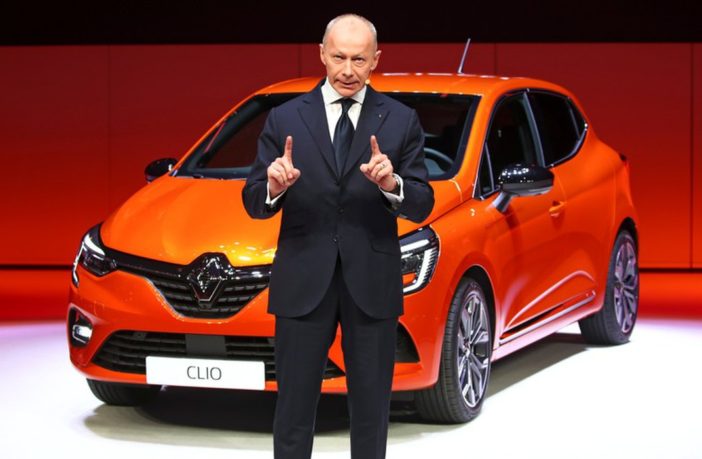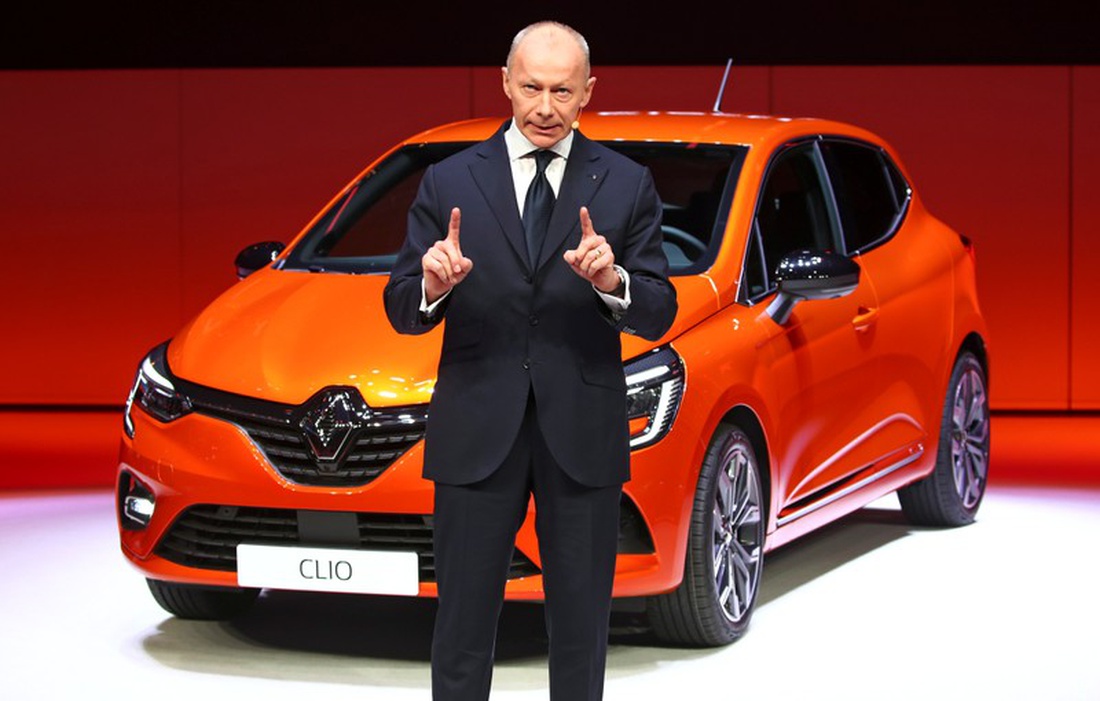WHBL
By Laurence Frost and Gilles Guillaume
Renault CEO Thierry Bollore presents the new Renault Clio at the 89th Geneva International Motor Show in Geneva, Switzerland March 5, 2019.
GENEVA (Reuters) – Two of Europe’s best-selling cars, the Renault Clio and Peugeot 208, go head-to-head at the Geneva motor show on Tuesday, as the auto market they dominate faces transformative pressures on its future profits and jobs.
As industry executives gather to discuss trade-tariff threats, new emissions rules and fines, or waning ambitions for autonomous driving, the two staple subcompacts will be wheeled out in apparent defiance of the profound changes underway.
In other ways, though, they show an industry fast adapting. Both models are poised to abandon what remains of their French production, completing a once controversial shift to lower-cost plants in Turkey, eastern Europe and Morocco. Both will also introduce electric and hybrid drivetrain options – which themselves pose a further challenge to supplier jobs https://reut.rs/2wrsoPT.
“There’s an ongoing need for compact, efficient urban models,” said Jean-Philippe Imparato, head of the Peugeot brand. “The market is robust.”
Small certainties are welcome in an industry facing hard-to-quantify strains including Britain’s planned exit from the European Union, a U.S.-led assault on trade liberalization and the many billions spent developing a new generation of electric vehicles for which mass demand remains largely unproven.
Major auto markets are now in decline or stagnating, and hopes for a lucrative self-driving car boom have also receded as costs and technical hurdles stay stubbornly high.
While higher-riding SUVs are on a relative upswing, compact hatchbacks such as the Clio and 208 are still Europe’s biggest vehicle category by volume, accounting for 3.5 million annual sales for an 18 percent market share.
“There’s plenty of room for both” cars and SUVs in Europe’s small-car market, said Denis Schemoul, an auto production analyst with forecaster IHS Markit. “The small hatch remains an excellent compromise in terms of size and versatility.”
LOWER STANCE
Both the 208 and the Clio, which has notched up 15 million vehicle sales since its 1990 debut, deliberately shun modish bulk in their latest incarnations, for a lower, more aerodynamic stance that can only help fuel-economy.
Carmakers risk hundreds of millions of euros in fines for missing the EU’s 2020-21 emissions goal averaging 95 grammes of carbon dioxide per kilometer. The bloc’s parliament and member states have agreed on a further 37.5 percent cut by 2030. According to new industry data published on the eve of the show, European new-car CO2 emissions actually rose in 2018 for a second consecutive year, as sales of relatively efficient diesels continued to collapse.
“Instead of moving forwards, the industry is regressing at a time when emissions targets are getting tougher,” said analyst Felipe Munoz of consulting firm JATO, which compiled the data.
PSA Group’s Peugeot and Citroen line-ups came in below 108 grammes of average CO2 emissions last year – just behind hybrid leader Toyota’s 99.9 grammes – while the Opel division acquired from General Motors in 2017 topped 125 grammes. Fourth-placed Renault averaged 109.1 grammes.
Strong sales of the new 208 will not be enough to avoid the early retirement of some Opel models before the new rules take effect, a PSA source told Reuters. “Expect some announcements later this year.”
With its lower, wider, longer 208, Peugeot has adopted the lighting signature and other design cues from its 3008 and 5008 SUV siblings, whose runaway success has lifted pricing power and driven PSA Group to record profits.
JOBS SHIFT
Assembly of the 208 will end at the group’s Poissy plant west of Paris, which had handled overflow production of the current model built mainly in Trnava, Slovakia. The new vehicle will also be produced in Kenitra, Morocco, according to two sources with knowledge of the matter.
Renault’s Flins plant is similarly unlikely to keep the Clio as the model upgrades, industry sources said. The factory now has a growing output of Zoe electric cars and alliance partner Nissan’s Micra to keep its lines humming and unions happy.
A new affordable Renault hybrid drivetrain will launch in the Clio next year, as Peugeot debuts its pure-electric 208 – both part of the industry’s scramble to electrify, cut emissions and avoid fines.
But the abrupt shift from combustion engines to batteries, which can account for 40 percent of the final price of a car, has sparked fears and warnings about the fallout for jobs in Europe, which lacks battery makers to compete with Chinese, South Korean and Japanese groups.
To avoid “ruinous” fines, PSA Chief Executive Carlos Tavares said in an interview with Le Figaro on Monday that carmakers were forced to “reserve battery volumes with Asian suppliers who only are happy to see us coming” and extract high prices.
“The European Parliament’s decision is quite simply forcing the auto sector to export 40 percent of its vehicles’ value to Asia,” he said.
(Reporting by Laurence Frost; Editing by Mark Potter)








